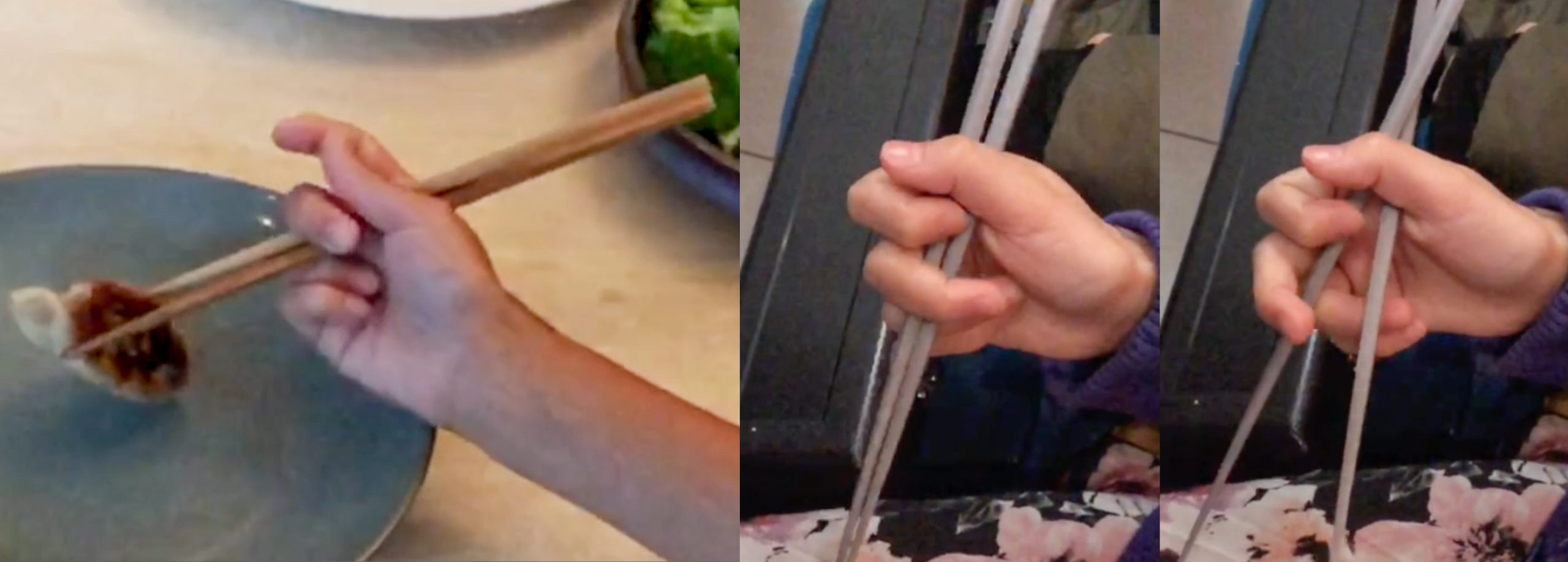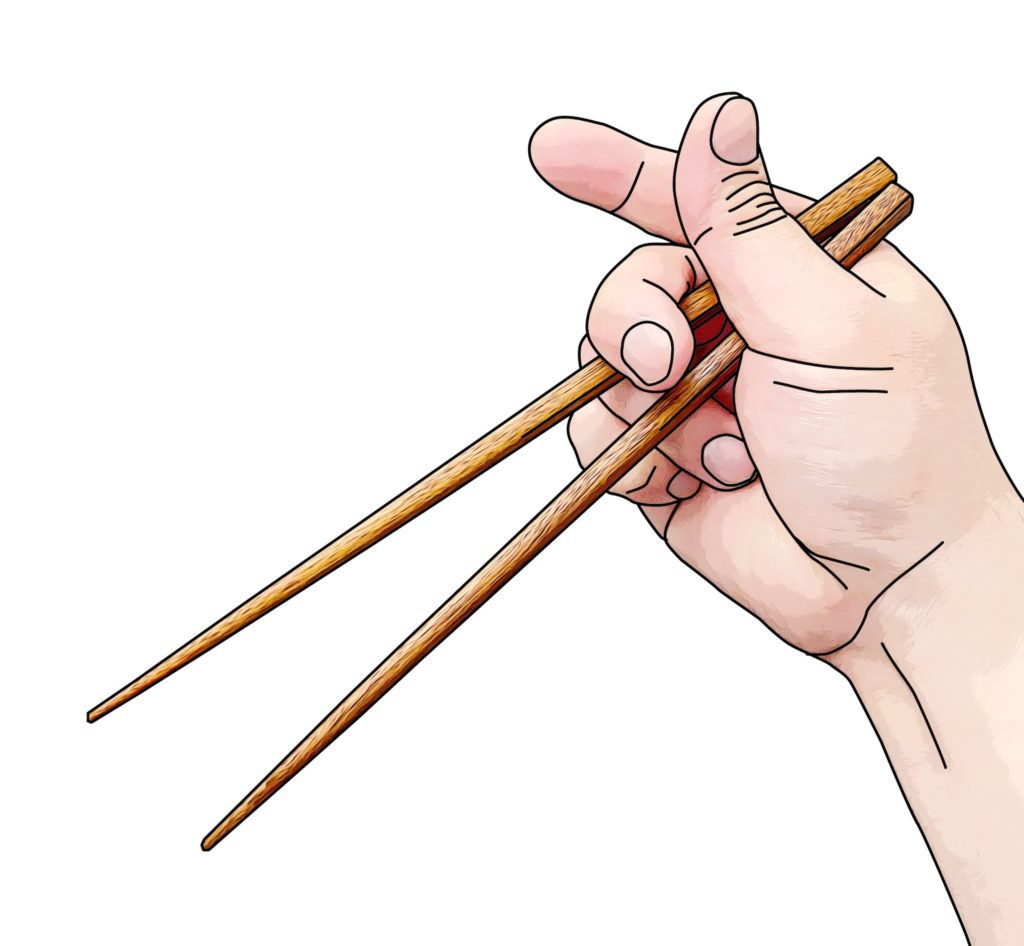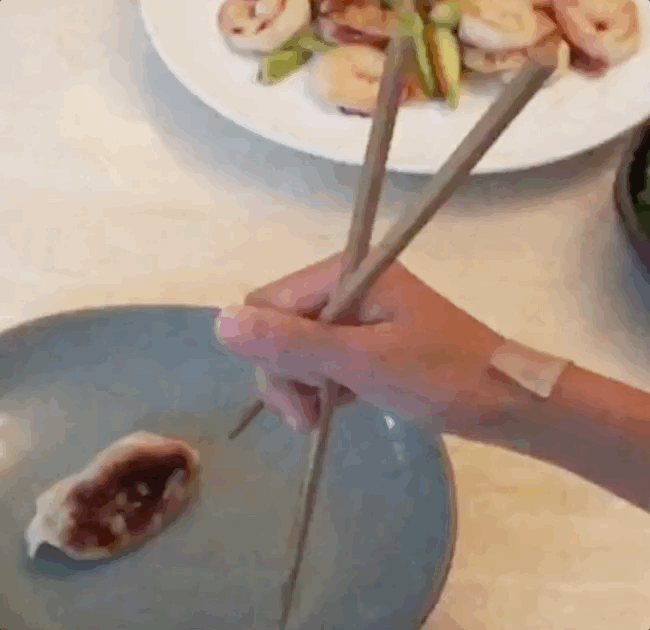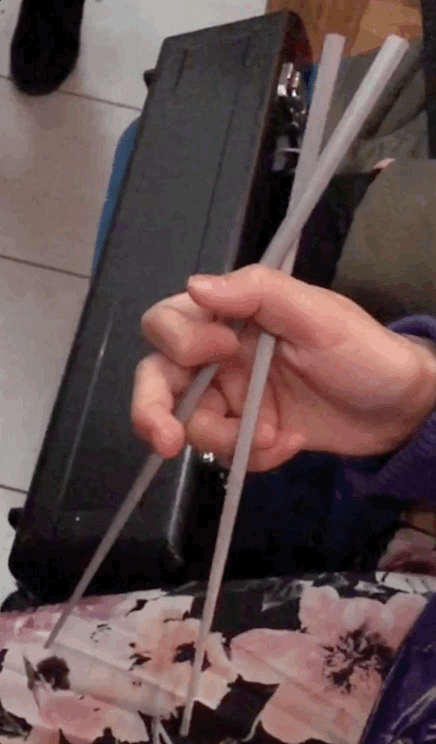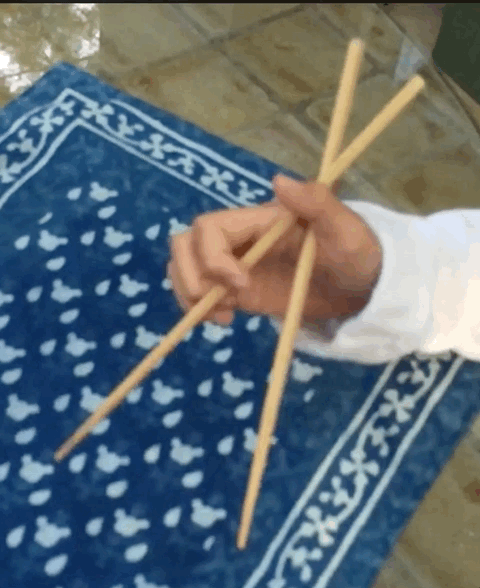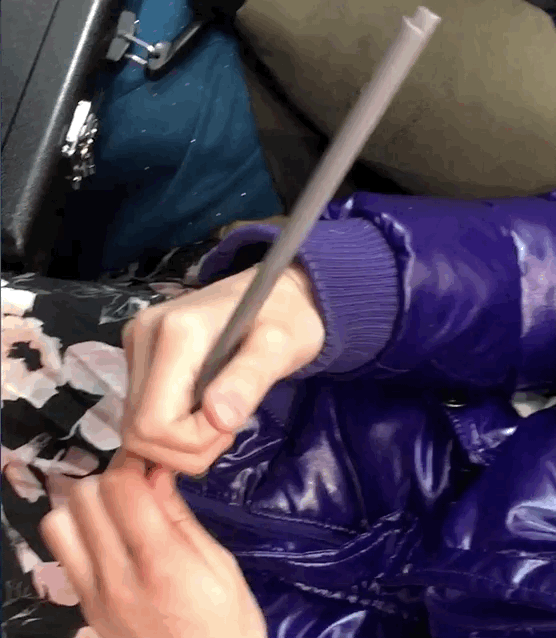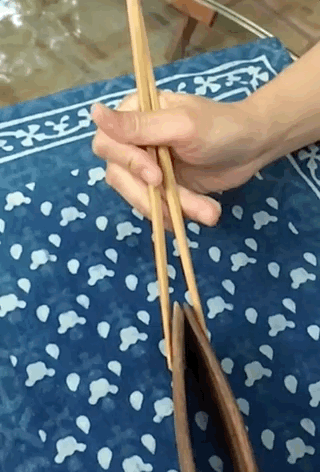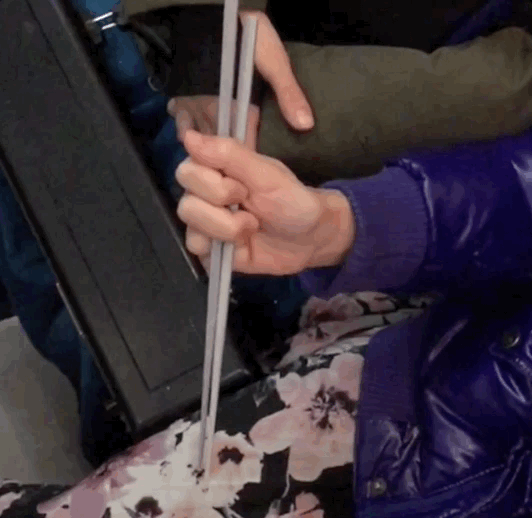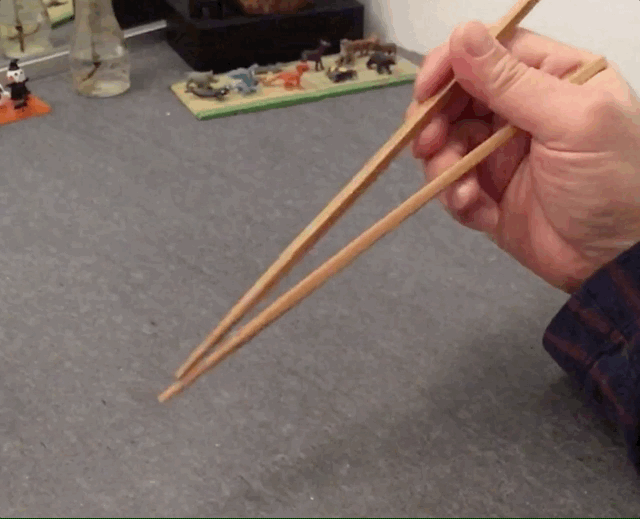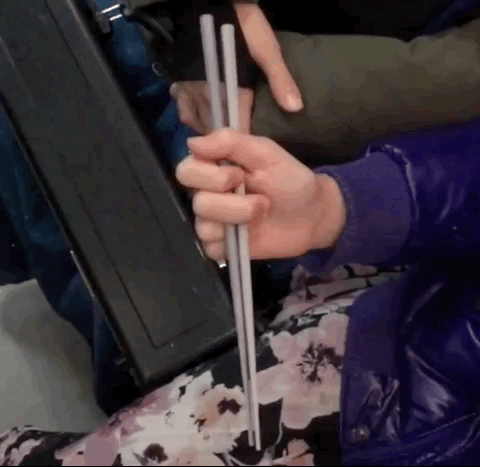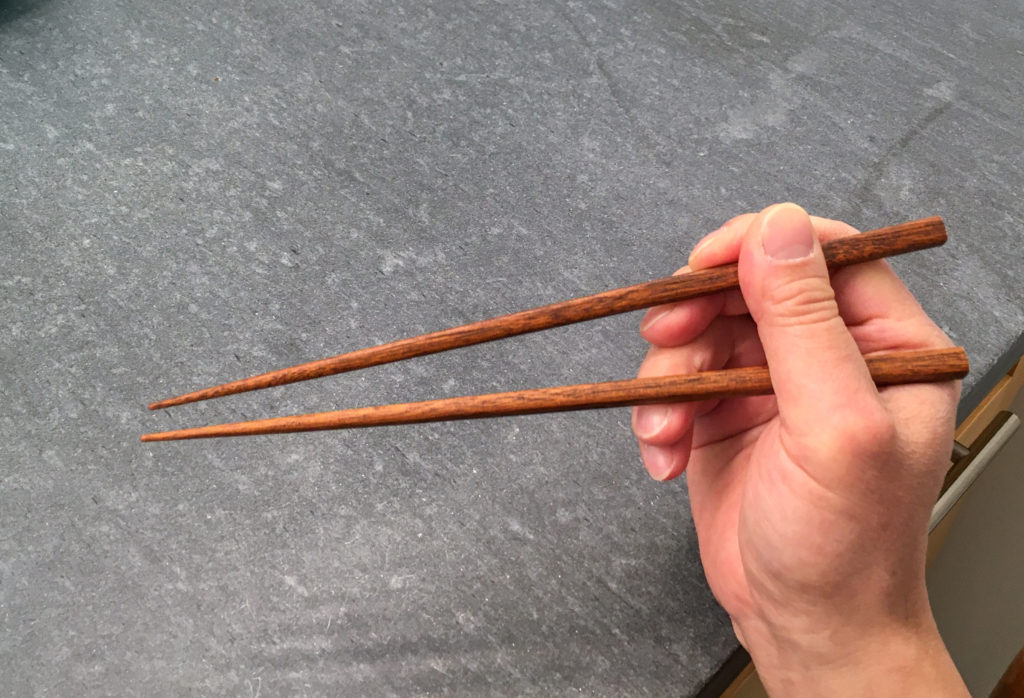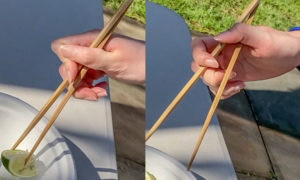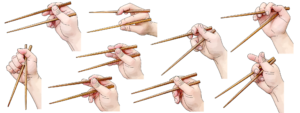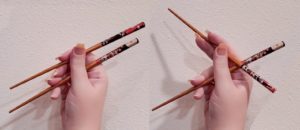Last Updated on June 30, 2021 by Staff
Table of Contents
Etyomlogy
One of the earliest alternative grips the staff at marcosticks.org studied was the Chicken Claws grip. We had wanted to name it the T-Rex grip, but sadly that alternative grip required more fingers to manipulate than T-Rex had claws. As you know, most dinosaurs had only three claws in their forelimbs, corresponding to our thumb, index finger and middle finger. And the T-Rex, as a special case, counted just two claws in each of its forelimb. So we gave up then, and left it as “Chicken Claws”.
As we continued to processed video recordings of more grip types for publishing, we finally found an alternative grip that could truly be named after dinosaurs. This grip uses only the thumb, the index finger and the middle finger to manipulate chopsticks , as illustrated below. Even dinosaurs with just three claws could have wielded chopsticks with this grip.
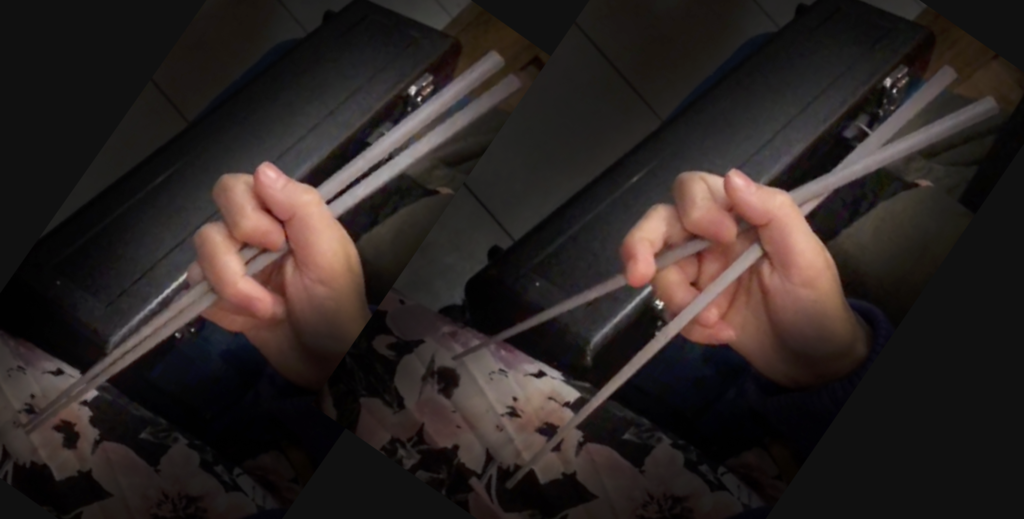
In many instances, users of this grip abandon the use of the index finger altogether, as illustrated below. That is, only the Thumb and the middle finger are needed. Hey, even T-Rex could have adopted this alternative grip!
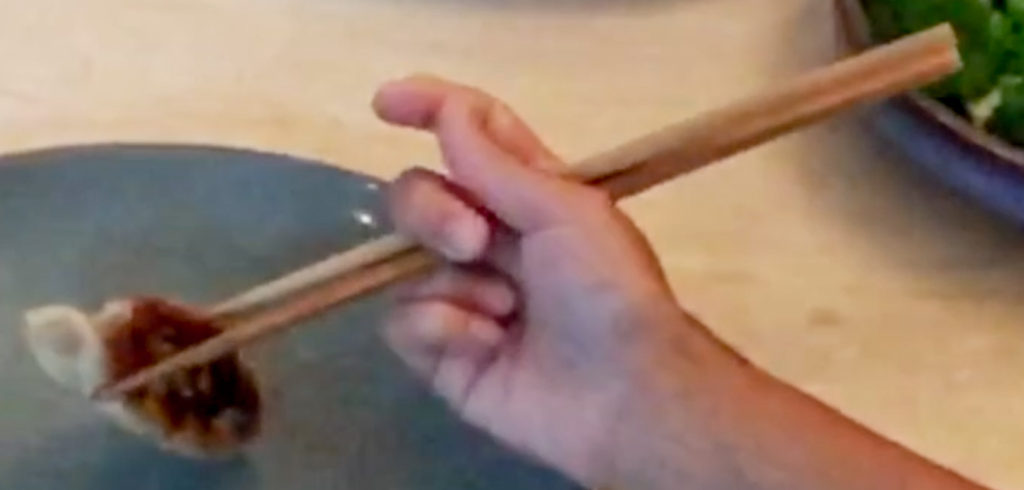
Dino Claws vs. Chicken Claws
The Dino Claws grip is obviously related to the Chicken Claws grip. It shares many similarities with Chicken Claws. When the closed posture of both grips are shown side by side, their similarities become evident.
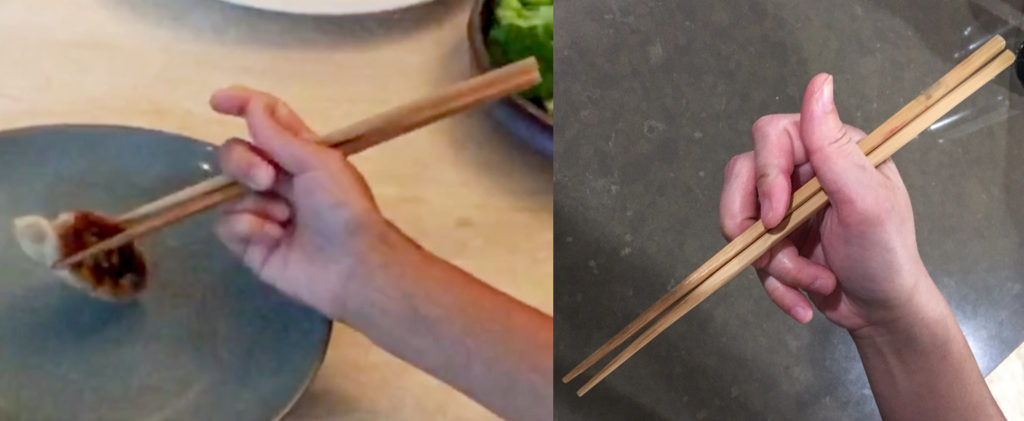
In both grips, the pulp of the thumb is completely unused. Only the base segment of the thumb is used to hold onto chopsticks. In both grips, the rear ends of the two sticks touch, unlike Standard Grip. This difference is illustrated in the picture shown below.

The Chicken Claws grip is already a deviation from Standard Grip, by relieving the thumb of its duty. The Dino Claws grip further deviates from Standard Grip by relieving the index finger of its duty as well, sometimes. The illustration above highlights this two-step deviation from Standard Grip.
Extending tips of chopsticks
As discussed, the index finger is not absolutely necessary in Dino Claws, when closing tips of chopsticks. However, the index finger is still needed, when extending tips of chopsticks apart, as shown below.
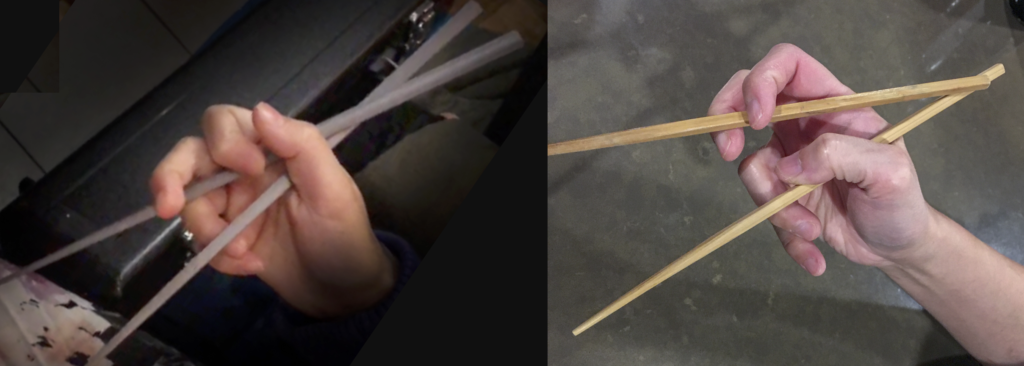
Following videos illustrate how three fingers are used when extending tips apart, and two fingers are used when closing tips of chopsticks. The video clip on the left is a slow-motion capture of the one on the right.
The illustration below shows how the three grip types discussed so far differ, when extending the top chopstick away from the bottom stick. Dino Claws on the left relies on the index finger hooking onto the top chopstick, to pull it away. Chicken Claws in the middle relies on the index finger and the middle finger caging the top chopstick – they pull it up and away. Standard Grip on the right relies on the thumb, the index finger and the middle finger to twirl the top chopstick using the tripod hold (i.e. planetary gear train).

Fake 1-on-2-support for the bottom chopstick
In all three grip types shown below, the bottom chopstick is pushed down by the base of the thumb, against the ring finger and against the purlicue, using what we call the 1-on-2-support technique. In the Dino Claws picture shown on the left, however, the thumb has shifted its location. It now sits right on top of the purlicue. This shift in thumb position is needed, in order to create some distance between the index finger and the thumb base, for leverage. It makes for a suboptimal 1-on-2-support, because the thumb isn’t sitting at the center between the two bottom supports. This thumb shift requires that Dino Claws users uncurl their palm, in order to extend chopstick tips, giving the posture a Dino look. In comparison, Standard Grip calls for the palm to be curled as if holding a golf ball, throughout the alternating motion.

The comparison between these three types at the closed posture is shown again below. One common theme among all three grip types appears to be, again, the 1-on-2-support of the bottom chopstick. This use of a fourth finger (i.e. the ring finger) in both extension and closing of chopsticks jeopardizes our characterization of this grip as Dino Claws (i.e. only three claws).

Fortunately, upon closer inspection, we discover that the ring finger isn’t always providing much support. Examine the alternating motion shown in the video clips below, with slow motion on the left, and regular speed on the right. While snapping at the air, under no load, this Dino Claws user leaves the index finger on the top chopstick. Also, under no load, the bottom chopstick is left “dangling” lose. This is evident from how the ring finger slides easily past the bottom chopstick during the alternating motion. It indicates that the 1-on-2-support isn’t actually in use.
Dino Claws vs. Dangling Stick
The bottom chopstick is often caged between the thumb and the purlicue, and left dangling – a hallmark of Dino Claws’ sibling grip, the Dangling Stick grip.
So, only three fingers are needed for Dino Claws, after all, for manipulation of the top chopstick. As for the bottom chopstick, sometimes it is only supported by the thumb and the purlicue. Perhaps we’ll call this arrangement the 1-on-1-support. The video below on the left highlights this phenomenon where the bottom chopstick dangles. On the other hand, this dangling stick is not observed in its parent grip, Chicken Claws, shown on the right below.
Sideway movements
Both users shown above hold chopsticks near the middle of sticks. As a result, when tips of sticks are extended apart, the rear ends also separate. The two sticks are said to be crossed, in both recorded videos. Tips of chopsticks separate and come together left to right, seen from the point of view of the recording observer. But that is where similarities end. Note how the Dino Claws video is shot from a top-down angle, while the Chicken Claws video is shot from the side. In Dino Claws, the two sticks move in a different plane, compared to Chicken Claws. Seen from the user of Dino Claws herself, the sticks move from side to side. On the other hand, the user of Chicken Claws sees the sticks move up and down.
This difference in the plane of movement can perhaps be best explained by exaggerated extensions of chopsticks shown below. When challenged to reproduce the exaggerated extension of sticks (below right), the user of Dino Claws demonstrated how she achieved an extension angle of over 90° (below left).
Common issues
One common issue Dino Claws encounters is again illustrated by an exaggerated example. The video below shows one botched attempt to bring chopsticks together, after extending them wide apart. Follow the bottom chopstick as it swings back towards the top chopstick. Notice how it bumps into the ring finger. In usual eating situations, this happens less often, as sticks are not extended this far apart normally.
The main challenge facing users of Dino Claws is that this grip offers very little leverage. One reason for the lack of leverage is mechanical. The main force for closing sticks come from the base of the thumb. It pushes sticks against the purlicue, at exactly where the pivot of these sticks are. Another reason is that this grip closes in on food items while chopsticks form an outward extending angle, allowing food items to slip away. On the other hand, many other grips, such as the Standard Grip, close in on regular food items with an inward angle, effectively pinching said food items in place.
Learn new grips
In summary, Dino Claws inherits from its parent grip, Chicken Claws, the complete disuse of the pulp of the thumb. In addition, it disengages the index finger in most eating situations, leaving only the thumb and the middle finger operating the top chopstick. Most of the time, the ring finger is only ornamental in Dino Claws as well, leaving the bottom chopstick dangling by the pivot point, held only by the base of the thumb and the purlicue. In this regard, Dino Claws is related to the Dangling Stick grip. See the Family Tree of alternative grips for all relationships.
Users of Dino Claws may learn to twirl chopsticks with Standard Grip, thus increasing their leverage on food items. This can be done by mastering the 1-on-2-support technique for holding the bottom chopstick, and the tripod hold technique for manipulating the top chopstick. Wouldn’t it be cool to be able to use multiple chopstick grips?
Taiwanese: 霸王龍爪
This grip is known as 霸王龍爪 (Pà-ông lêng jiáu) in Taiwanese. 霸王龍 is how 暴龍 is generally known in Taiwanese.
